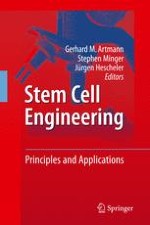2011 | OriginalPaper | Buchkapitel
Embryonic Stem Cells: A Biological Tool to Translate the Mechanisms of Heart Development
verfasst von : Omonigho A. Aisagbonhi, Antonis K. Hatzopoulos
Erschienen in: Stem Cell Engineering
Verlag: Springer Berlin Heidelberg
Aktivieren Sie unsere intelligente Suche, um passende Fachinhalte oder Patente zu finden.
Wählen Sie Textabschnitte aus um mit Künstlicher Intelligenz passenden Patente zu finden. powered by
Markieren Sie Textabschnitte, um KI-gestützt weitere passende Inhalte zu finden. powered by
